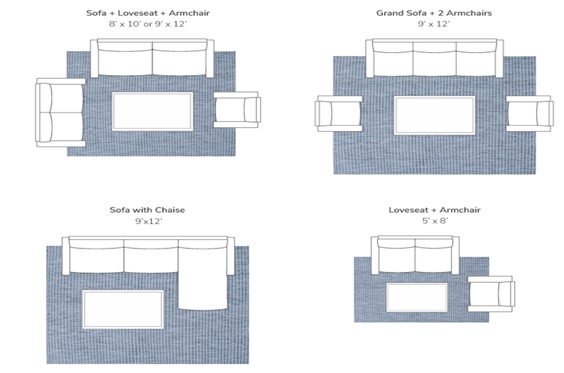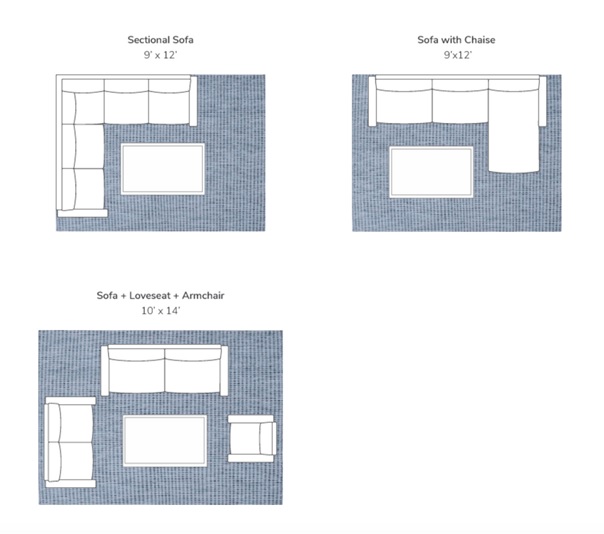Rug Care Quick Tips:
- Do not use a beater bar vacuum attachment on hand made area rugs.
- Spot clean with a few drops of clear dish soap mixed with warm water.
- Rotate rugs every 6 months for even fading and wear.
Hand Knotted:
Hand-knotting rugs is an intense labor of love whereby each tuft in a rug is created by tying a knot around a warp thread. This ancient and time-honored technique of weaving is time-consuming, and demands ability that most weavers can only achieve after years of training. Larger rugs often employ as many as a dozen skilled artisans working on a single rug at the same time. This process may take as few as four months and as long as one year to finish a single rug. The finer the knot, that is to say the higher the knot count, the more intricate and valuable the rug can be. Hand knotted rugs will remain as beautiful as the day they were purchased for many years even in high traffic areas when properly cared for.

Hand Woven or Flat Weave:
Also referred to as Soumak (double sided weave), Kilim (traditionally from Turkey) or Dhurrie (traditionally from India). A very durable rug, flat-woven rugs are among the most basic and beautiful of all hand-loomed floor coverings. The underlying art of flat-woven rugs is their ability to be reversed, and their suitability in nearly any setting, from the classic to the contemporary. Hand woven or flat woven rugs are known for their durability and cleanability since they do not have a backing. As with all constructions not all are created equal, look for weight and softness of the yarn. Life expectancy can be little less than hand knotted rugs.

Machine Made or Power Loom
Some higher quality machine made rugs can last nearly as long hand knotted rugs, look for denser pile and soft backing. Machine made rugs would include broadloom or wall to wall carpet which can be cut and bound to any shape and size you want, offering a fully customizable look for less cost than a handmade option. Life expectancy can be less than 10 years for lower quality or 15+ for high quality rugs.

HOW TO ARRANGE AN AREA RUG: SIZE AND SHAPE MATTER
In order to find the right area rug and then properly arrange it to perfectly accentuate your décor you’ll need to consider more than just style, color and material – size and shape matter too. An optimal size rug in a shape that best suits a particular living space will help to invigorate the entire aspect of a room while also displaying the finest qualities of the rug itself. Here are some helpful tips on how to arrange a new area rug.
Know the rules, then bend at will!
In general, the rule of thumb is to allow approximately 18 inches of exposed floor space around the perimeter of an area rug, however the overall size and location of the room should also be taken into consideration. The 18” rule works well in rooms that are enclosed and separate from surrounding areas while the look of smaller rooms may benefit from having less exposed floor space. Keep in mind that an undersized rug can make a room look small and make the other furnishings around it look graceless. When it comes to area rugs, bigger can indeed be better.
LIVING ROOM
The dimensions of a living room will dictate the ideal size and shape rug for the space. Here are some helpful tips that take into account the layout of the furniture using rectangular rugs.


DINING ROOM
When choosing a rug for the dining room be sure that it is big enough to allow all four legs of the chairs to sit comfortably on the rug, even when the chairs are pulled away from the table. A loose rule of thumb to follow is that your rug should be extended at least 24 inches around the table.

THE BEDROOM
The most important factors in selecting the right size area rug for the bedroom are the dimensions of your bed as well as the room. The ideal size for a queen bed is an 8' by 10', while a king would look better with a 9' x 12' rug (and that same size works for two twin beds in a kids' room). For a full, a 5' x 8' rug should suffice.

In terms of placing the rug, you have a lot of options, but the most preferred way is to place the rug partially under the bed. In this case, you'll want to lay the rug perpendicular to the bed and pull it under, stopping a few inches before your nightstands so it's around halfway under the bed, with the bed centered on top.